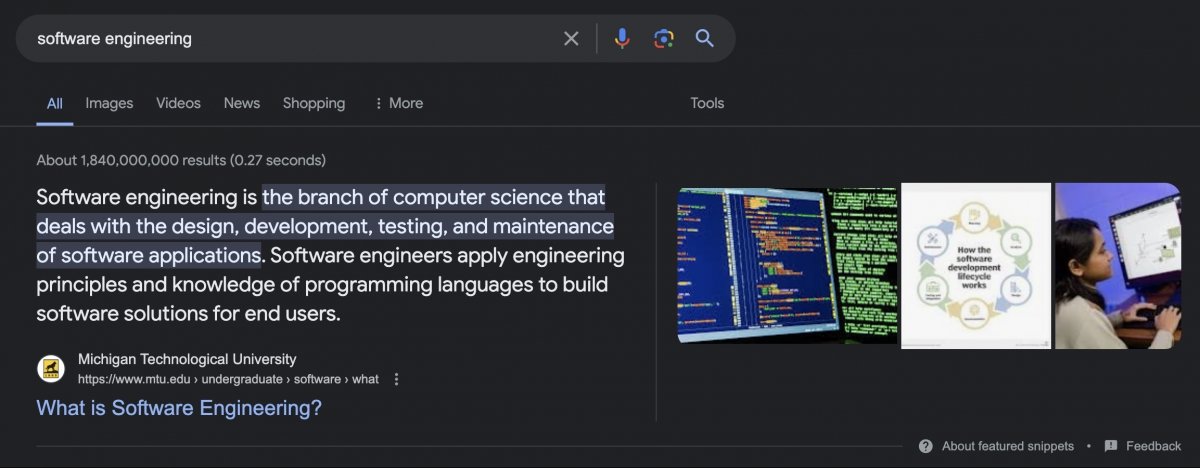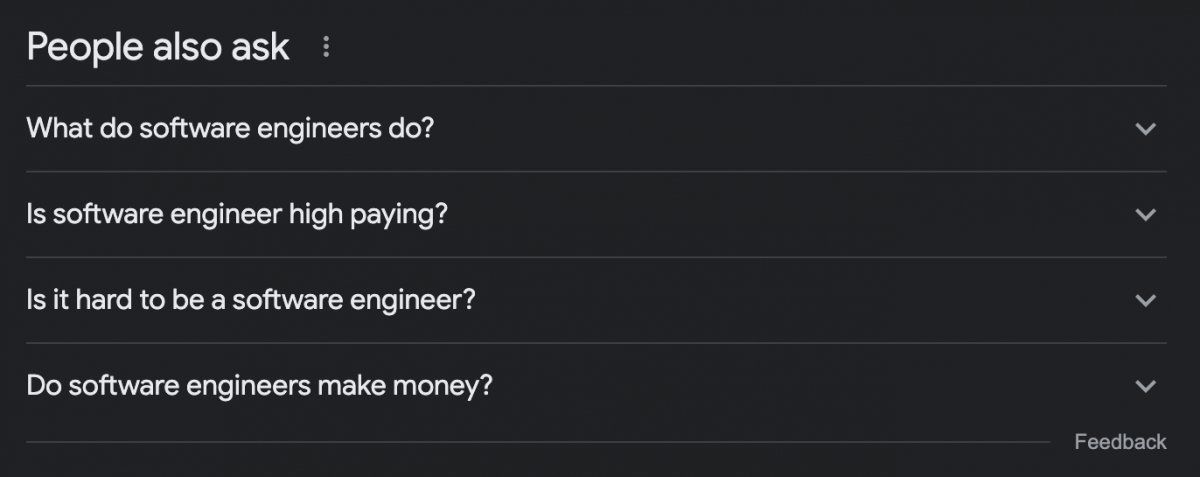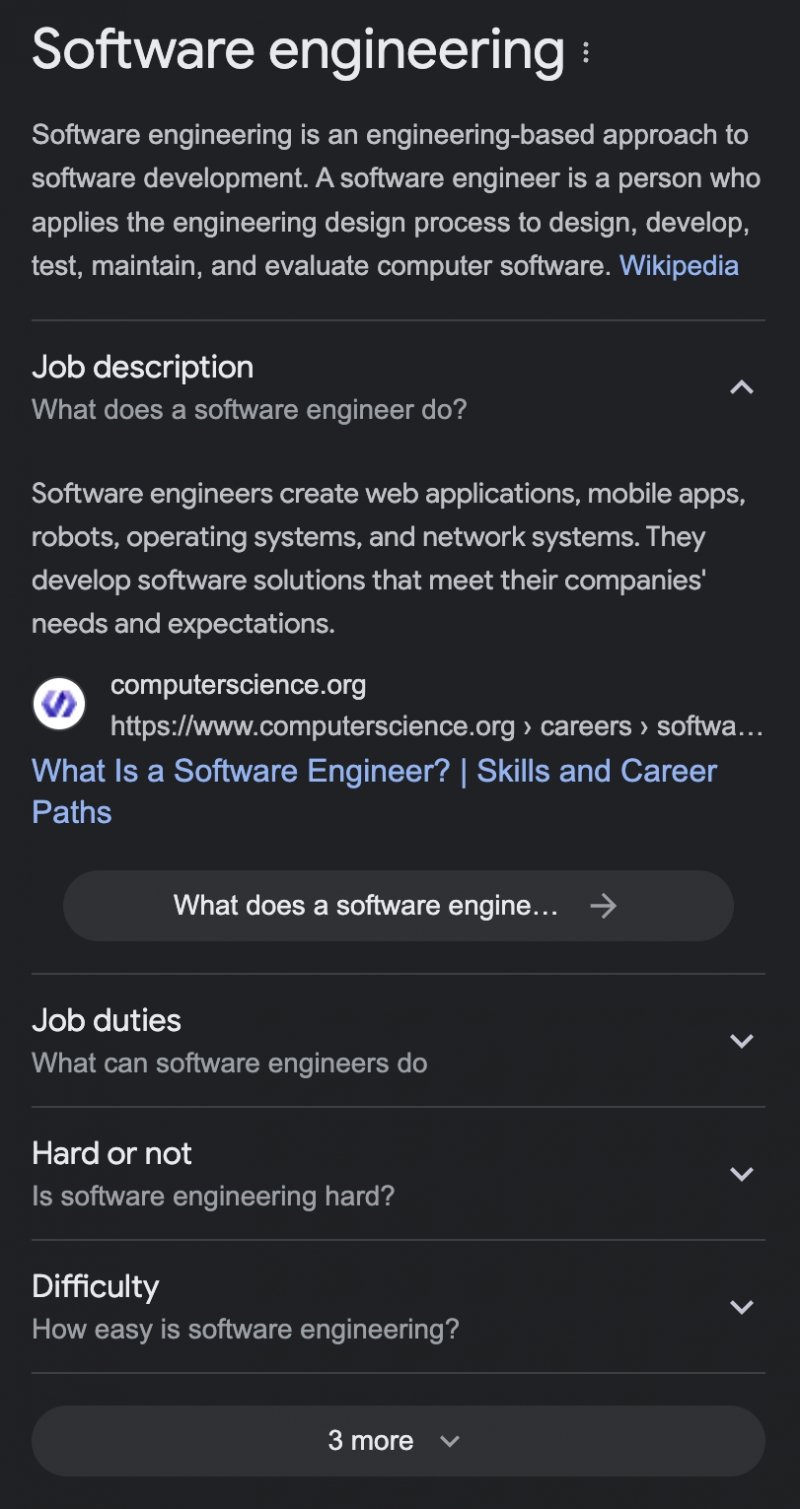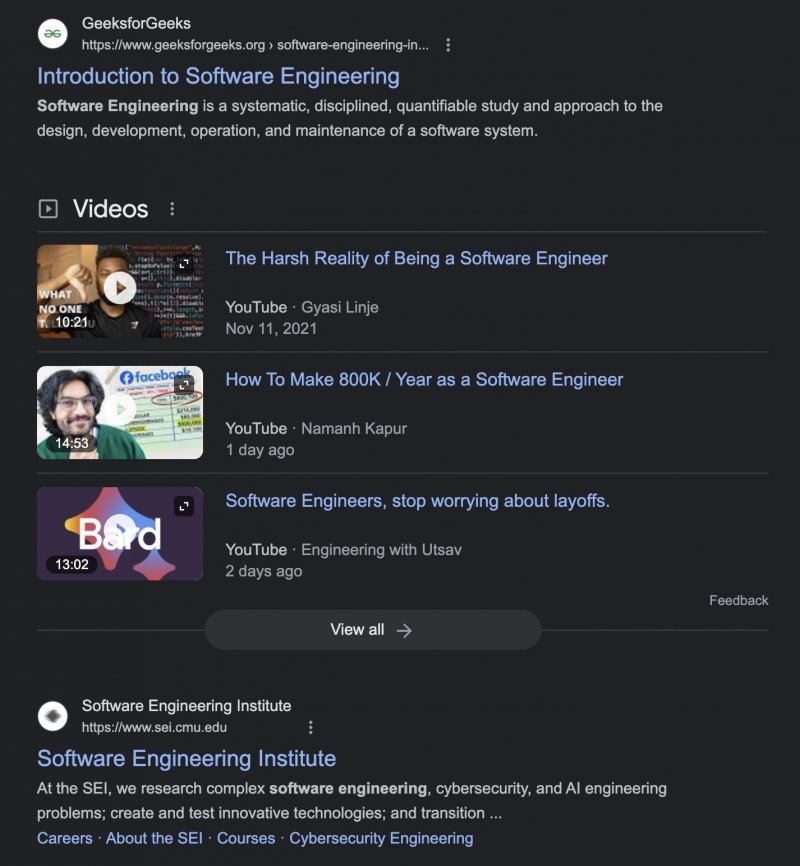SERP stands for 'search engine results page.' After a user enters a query into a search engine the SERP is displayed and contains a variety of different content sections and links. By understanding the different sections of a search engine results page and how the overall results are built, businesses can implement search engine marketing strategies that will lead to measurable results.
Featured Snippet
Many search engine results pages have an organic featured snippet at the top:

The featured snippet section is made up of several parts:
- A one–three sentence description about the webpage. This can be the meta description, but more often is pulled from on-page content that the search engine vendor thinks answers the user's query.
- A site logo and site name of the website that owns the webpage featured in the snippet.
- A URL and breadcrumb list, which may be shortened or truncated to fit the space.
- The webpage title. This can be the meta title, but more often is a modified version of the page title that is more succinctly related to the user's query.
- An image pack to the right, typically containing two images. The images often are not from the same website featured to the left.
Securing a Featured Snippet in SERPs
Getting some of your key product or service pages into a featured snippet position is a part of a typical search engine marketing plan. But why? In our experience, the difference between the featured snippet slot and the second slot on SERPs is a click-through rate increase of 8x. The increased traffic that comes being featured in the top spot can lead to more conversions and revenue from the traffic gain on your website.
By understanding what the search engine optimization process is and by following our top five tips for SEO improvement, you can work on climbing SERPs and becoming a featured snippet. We've found that good content is most important, but we've also learned that smaller details such as technical SEO also helps move pages up—especially from the second or third result in SERPs up to number one.
Paid Search Results
For most queries, paid search results follow after the featured snippet.

Paid search results (often marked by a Sponsored or Ad label) are ads run by businesses who want to gain search engine traffic, but are unable to attain a high organic placement in SERPs. The design of paid search ads can vary by search engine vendor and even by query, but they all have a few common components:
- Site logo: a logo for the company paying for the ad. Can be customized for the ad.
- Site name: a name for the company paying for the ad. Can be customized for the ad.
- Breadcrumbs: customized breadcrumbs chosen specifically for the ad. They may not match the actual breadcrumbs of the webpage linked in the ad.
- Headline: looks like a meta title, but is customized for the ad. Contains one, two, or three components often separated by a pipe.
- Description: looks like a meta description, but is customized for the ad. One or two sentences. Each sentence has a maximum character count of 90.
- Extras: depending on the search engine vendor, different search ad extras may be displayed
to enhance the look of the ad and increase CTR. Common options include:
- Site links: extra links relevant to the ad, customized by the company paying for the ad.
- Call button: a link to activate a phone call to the company paying for the ad.
- Image thumbnail: a small image thumbnail which makes the ad stand out more.
Between one and five paid search ads typically appear towards the top in SERPs. Occasionally an additional one to five paid search ads also appear at the bottom of SERPs. On mobile devices, some search engine vendors are using an infinite scroll design (which means there is no 'bottom' to the SERP) so paid search ads appear in-between groups of seven to ten organic search results.
Organic Search Results
The next type of content in SERPs is the organic search results. Organic means that the results are not paid for, but rather are organically earned through SEO best practices.

The design of organic search results is mostly consistent between search engine vendors—they typically have these common components:
- Site logo: a logo for the company, specified site-wide through the logo attribute of Organization Schema.org code.
- Site name: a logo for the company, specified site-wide through Site Name Schema.org code.
- Breadcrumbs: automatically pulled by the search engine vendor from your organic website. The search vendor decides which breadcrumbs to fit into the SERP.
- Meta Title: the search engine vendor decides if it wants to use the web page's meta title or create something custom from content on the web page.
- Meta Description: the search engine vendor decides if it wants to use the web page's meta description or create something custom from content on the web page.
- Site links: occasionally, the search engine vendor will display extra links that the vendor thinks are relevant to the web page. We've seen breadcrumbs, sublinks, and even web page headline anchors used in this space.
People Also Ask
After a section of organic search results, some search engine vendors will include a list of auto-suggestion follow-up questions. Google, for example, calls this section "People also ask" and uses a question/answer format in the form of sliders.

If you can get your content into this section, you can gain supplemental search engine traffic without necessarily securing a top search engine ranking. In our experience, writing useful frequently asked question content on your own website and tagging your HTML markup with FAQ schema can help push your content into this special SERP section.
Sidebar Content
Some search engine vendors include a special sidebar section—typically on the right side of the desktop interface.

The design and content of the sidebar section varies by search engine vendor and by query and typically includes a combination of images, descriptions, facts, related webpages, frequency asked questions, and more.
Video Section
When a search query has related videos, a video section may appear within the midst of the organic search results.

Google is the largest search engine vendor and also owns YouTube, so posting video content to YouTube can increase your chances of appearing within the video section of SERPs. Follow many of our same SEO content tips when creating your video content:
- Use keywords in your video title and description.
- Make sure your video descriptions are rich in content and useful to your viewers.
- Attach an accurate transcript to your video, so that YouTube and Google can better understand the content of your video.
- Include relevant keywords/tags and hashtags based on what the video platform allows.
- Section your video into chapters or key moments, based on what the video platform allows. Some search engine vendors will then reference the specific chapter or moment from your video that relates to the user's query and jump to that point in your video.